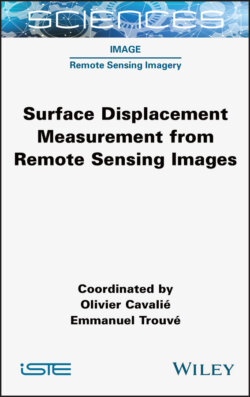Читать книгу Surface Displacement Measurement from Remote Sensing Images - Olivier Cavalie - Страница 34
1.4.3. Future optical missions
ОглавлениеRegarding the new missions, it is possible to outline the main strategic drivers as follows:
1) satellite operators replace the existing missions that provide intensively used products, across the whole range of resolutions (<10 m spatial resolution in general). Examples: WorldView Scout 1-6, ResourceSat-3/3A;
2) new commercial systems try to reach higher-spatial-resolution markets. Examples: PleiadeNeo, WorldView Legion 1-6;
3) the value of the data is linked to the acquisition time after an event. Operators want to decrease the satellite revisit time by increasing the number of agile satellites. Thanks to the evolution of technologies, it is possible to reduce satellite dimensions and satellite weights compared to the earlier generations. It is also possible to reduce the cost of a single satellite (and the launch cost). In order to reach a high spatial resolution, a lower altitude is chosen. Examples: new constellations such as Co3D, Vivid-i and PlanetScope. However, many new space constellation projects have also been canceled due to technical and financial constraints;
4) new technologies open the door to new in-orbit functionalities; for example, new sensors provide new imagery and video capabilities;
5) new hyperspectral satellites are coming, such as Enmap and Prisma, with 30 m resolution. The hyperspectral images may be used to obtain information about soil characteristics such as humidity and may be very useful for the analysis of soil displacements.
The technical specifications of some future optical missions, where available, are given in Tables 1.12 and 1.13. Some of them may be of specific interest for future 3D and surface displacement measurements:
– Co3D: These extremely agile satellites with all-electric platforms will provide new ways of acquiring, processing and transferring images. They will provide very-high-resolution 3D data;
– PléiadesNeo: This system corresponds to the new generation of Pléiades satellites. With a 1.5 m diameter telescope, the satellites will provide 30 cm images. The constellation will produce 40 TB of data every day;
– EarthDaily: EarthDaily provides an alternative choice for building global world coverage for change detection activities with this satellite constellation working at a 5 m resolution. This system complements a very-high-resolution service;
– Vivid-i: This constellation is planned with 15 satellites, with a weight lower than 100 kg, providing imagery and video capabilities at less than 1 m resolution;
– WorldView Legion: These satellites correspond to the new generation of WorldView satellites. Launches are planned for 2021;
– WorldView Scout: This constellation will have six or more small satellites, which will be able to revisit some key areas 40 times a day at a 0.80 m resolution.
Table 1.12. Future mission characteristics and parameters
| Satellite | Nation | No. of satellites | Altitude (km) | Local time | Weight (kg) |
| Co3D | France | 4–2 | 502 | 11:00 | 300 |
| Enmap | Germany | 1 | 653 | 11:00 | 871 |
| PléiadesNeo | France | 4 | 620 | 10:30 | 750 |
| ResourceSat-3/3A | India | 1 | 795 | 10:30 | 1,200 |
| EarthDaily | Canada | 8 | - | - | 340 |
| Vivid-i constellation (Earth-i) | UK | 15 | 500 | - | 100 |
| WorldView Legion 1–6 | USA | 6 | - | - | - |
| WorldView Scout 1–6 | USA–Saudi Arabia | 6 | - | - | - |
Table 1.13. Future instrument characteristics
| Satellite | Year of launch | Highest spatial resolution (m) | No. of XS bands | Swath width for highest resolution (km) |
| Co3D | 2023 | 0.5 | 4 | 7 x 5 |
| Enmap | 2021 | 30 | 8 + 154 | 30 |
| PléiadesNeo | 2021 | 0.3 | ≥4 | 14 |
| ResourceSat-3/3A | 2021 | 10 | 4 | 280 |
| EarthDaily | 2022 | 5 | 9 | 360 |
| Vivid-i constellation (Earth-i) | - | 0.6–1 | 3 | 5.2 x 5.2 |
| WorldView Legion 1–6 | 2021 | 0.30 | - | - |
| WorldView Scout 1–6 | 2021 | 0.8 | - | - |
